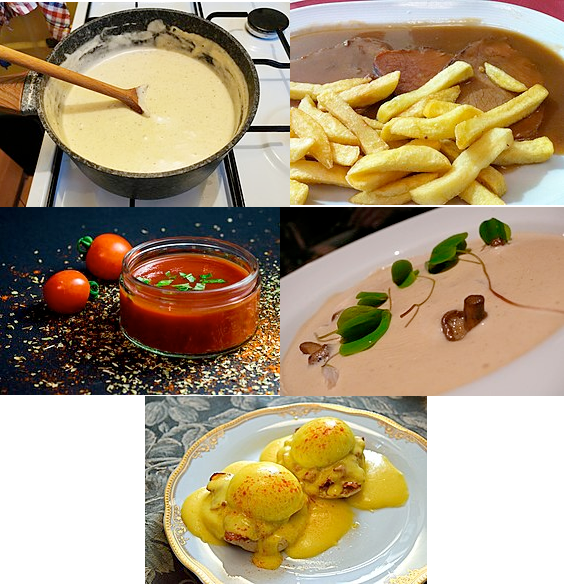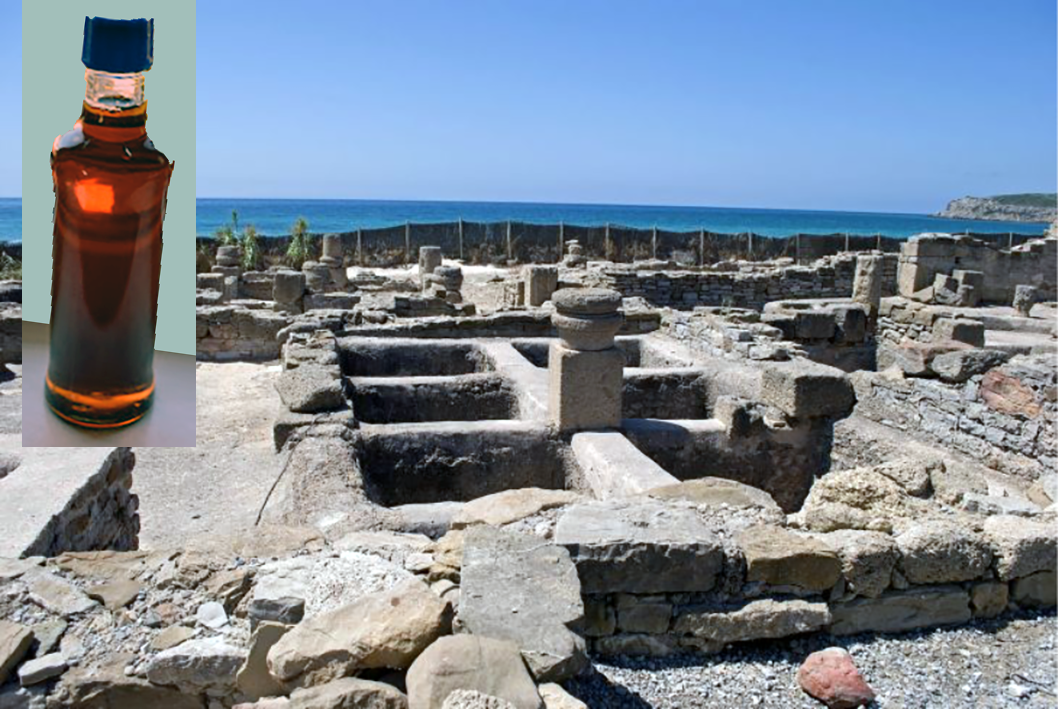FabulousFusionFood's Sauce Recipes 15th Page
 Five French mother sauces: Béchamel; Espagnole; Tomato; Veoluté
Five French mother sauces: Béchamel; Espagnole; Tomato; Veolutéand Hollandaise
Welcome to FabulousFusionFood's Sauce Recipes Page — The recipes presented here are all for different kinds of sauces, whether sweet or savoury. In cooking, a sauce is a liquid, cream, or semi-solid food, served on or used in preparing other foods. Most sauces are not normally consumed by themselves; they add flavour, texture , and visual appeal to a dish. Sauce is a French word probably from the post-classical Latin salsa, derived from the classical salsus 'salted'.
Sauces may be used for sweet or savory dishes. They may be prepared and served cold, like mayonnaise, prepared cold but served lukewarm like pesto, cooked and served warm like béchamel or cooked and served cold like apple sauce. They may be freshly prepared by the cook, especially in restaurants, but today many sauces are sold premade and packaged like Worcestershire sauce, HP Sauce, soy sauce or ketchup. Sauces for salad are called salad dressing. Sauces made by deglazing a pan are called pan sauces.
Possibly the oldest recorded European sauce is garum, the fish sauce used by the Ancient Romans, while doubanjiang, the Chinese soy bean paste is mentioned in Rites of Zhou 20 (c. 130 BCE). The 4th century CE De Re Coquinaria, a late Latin manuscript details a large number of ancient Roman sauces. The 12th Century Forme of Cury details a number of medieval sauces.
In French cuisine, the mother sauces (French: sauces mères), also known as grandes sauces in French, are a group of sauces upon which many other sauces — 'daughter sauces' or petites sauces — are based. Different sets and classifications of mother sauces have been proposed since at least the early 19th century.
 Garum factory, Baelo Claudia, Spain. with bottle of garum inset.
Garum factory, Baelo Claudia, Spain. with bottle of garum inset.
Béchamel sauce: White sauce, based on milk thickened with a white roux.
Espagnole sauce: Brown sauce based on a brown stock reduction, and thickened with a brown roux. Ingredients typically include roasted bones, bacon, and tomato (puréed or fresh).
Tomato sauce (sometimes Tomate or Tomat): As well as tomatoes, ingredients typically include carrots, onion, garlic, butter, and flour, plus pork belly and veal broth.
Velouté sauce: Light coloured sauce, made by reducing clear stock (made from un-roasted bones) and thickened with a white roux. Velouté is French for "velvety".
Hollandaise sauce: Warm emulsion of egg yolk, melted butter, and lemon juice or vinegar.
The original French editions of Le guide culinaire did not include Hollandaise as a grande sauce, but separately described mayonnaise — a cold emulsion of egg yolk with oil and vinegar—as a mother sauce for cold sauces; this was not included in the English edition.
Sauces are very extensive and include those sauces such as soy sauce, hot pepper sauces and Worcestershire sauces used to flavour other dishes. You have sauces such as gravies and sweet custards that are intended to be poured over other dishes. You have dipping sauces often used to accompany starters and snacks. There are also salsas, which, by definition are sauces (the same would be true of fresh Indian chatnis). Ketchups, derived from Indonesian Catsups are also sauces, as are various salad dressings.
The alphabetical list of all the sauce recipes on this site follows, (limited to 100 recipes per page). There are 1411 recipes in total:
Page 15 of 15
| Wild Plum Sauce for Roast Pork Origin: Britain | Yoghurt Chutney Dipping Sauce Origin: Zimbabwe | Zambian Mopane Worms Relish Origin: Zambia |
| Wild Strawberry Sauce Origin: Britain | Yoghurt Mint Dip Origin: Britain | Zambian Piri Piri Origin: Zambia |
| Wine Sauce for Sweet Puddings Origin: Britain | Youvarlakia Soupa Avgolemono (Meatball Soup with Egg and Lemon) Origin: Greece | Zimbabwean Malva Pudding Origin: Zimbabwe |
| Yaroa Dominicana Origin: Dominican Republic | Zafrig (Soup Thickening Base) Origin: Croatia |
Page 15 of 15